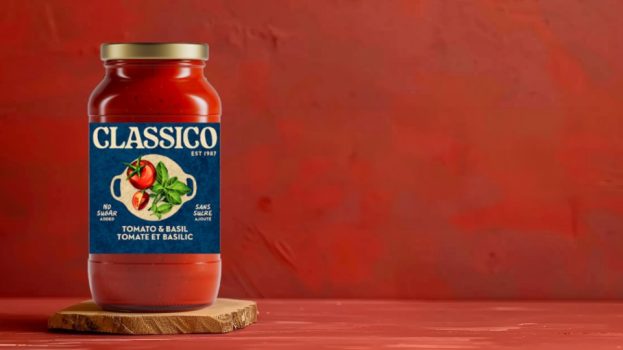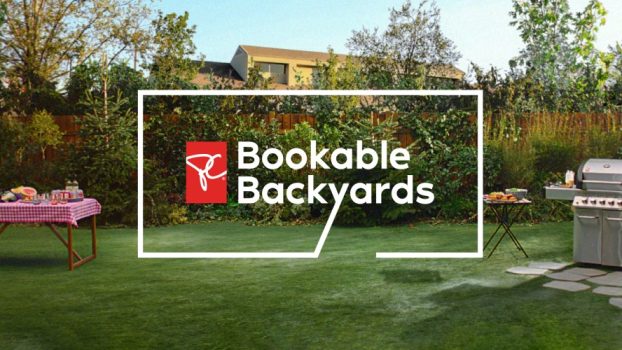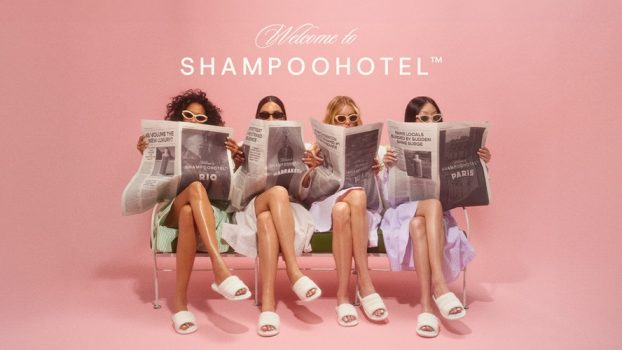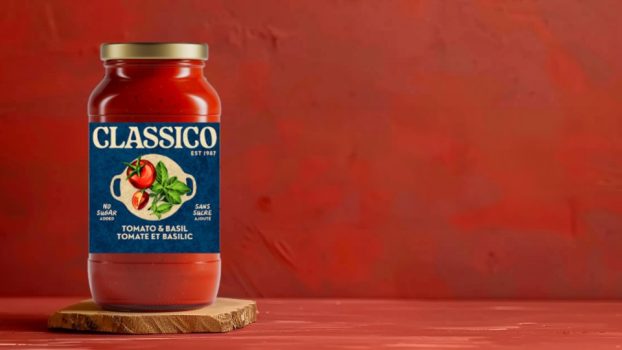There used to be a time when a girl could go to the drugstore, and there was only one shampoo she would think of buying – it had that unmistakable fragrance, and if she used it, she would be known as a Breck Girl. Go into a drugstore now, and you’ll see hundreds of different shampoo brands lining the shelves, all promising to make your hair bouncy one moment and smooth as silk the next.
Soon, Breck may re-join the shampoo queue in Canada. The product went to the brand graveyard in 2000, but was recently revived in the U.S. by The Himmel Group in New York, a marketer of over-the-counter health and beauty aids.
The Himmel Group isn’t the only one maximizing the potential of ghost brands: over the past five years, everything from the Puma sneaker to Oxydol detergent and Biz bleach have made comebacks. The latter two were revived in 2000 by Cincinnati-based Redox Brands, a company formed by ex-Procter & Gamble employees Todd Wichmann and Rich Owen.
But finding just the right recipe of heritage versus freshness required to make oldies (like the VW Beetle) relevant to today’s fickle customer was a tough call. Still, a little heritage can go a long way.
Kelly Frances, sales and marketing manager for Toronto-based Strategies International, says relaunching brands is a definite trend in the marketing world, due in part at least, to Sept. 11. ‘We’re definitely seeing a lot of it, and not just in any one particular area or category – it’s expanding into a variety of different markets. People are looking for a way to transport themselves to a better time or place – a time when there wasn’t as much worry or strife in the world.’
Frances says the benefits of relaunching a brand largely lie in its existing brand awareness, which as a result, can reflect in a good deal of cost savings. ‘In terms of actual marketing costs, depending on the product, it could save you millions of dollars,’ says Frances. ‘If you’ve already got that awareness, you’re one step ahead. But you have to make sure that awareness level is sustained, as just the memory of the brand may not be enough.’
Frances cites Hush Puppies shoes as a brand that wasn’t able to sustain its awareness after it relaunched in the late 1990s. ‘A few years ago, they came back and it was extremely popular, but it`s hard to maintain that popularity – a couple of years later, you were embarrassed to be seen wearing Hush Puppies,’ says Frances. ‘They’re still there but not quite as exciting as when they first relaunched.’
Breck shampoo, introduced in 1930, was popular in the 1960s and ’70s. When the brand was bought by Dial in 1990, Breck went through a series of changes. This disenfranchised the consumer, according to Jeffrey Himmel, chairman of The Himmel Group. Himmel decided Breck still had some life left in terms of brand equity and decided to relaunch it, as he had with brands like Gold Bond and Cuticura.
‘It has to be the right brand with the right heritage, the right market potential and with a point of difference over the competition,’ says Himmel. ‘And you have to understand where that point of difference has meaning to the consumer today.’
Himmel has a good track record when it comes to reviving brands: sales have almost tripled for Ovaltine, a nutritional chocolate beverage that Himmel relaunched in the early 1990s. Market share of the product has grown from 11% to 30%.
Himmel purchased the marketing rights to Breck from Dial in June of 2001 and the brand came back this past summer in the U.S. It will also make its return to Canadian drugstore shelves, though Himmel can’t say when, precisely. ‘We knew we had to bring back the product that was lodged in people’s memories,’ says Himmel. So he and his team recreated the original Breck bottle and kept the trademark fragrance, but made the formula milder to bring it up to today’s standards.
Himmel says they are initially targeting women 35 and over, the age group that tended to use the original brand. ‘The people who will be easiest to convert are those that have an emotional connection to the brand.’
Over time, Himmel says the company will gradually bring the target demographic down to reach a wider consumer base. The brand is getting a lot of press coverage, and while the new television ads for Breck shampoo don’t use models as they did in the original campaign, the spots hearken back to the simple, straightforward approach they had in the 60s. The spots convey ‘everything you remember about Breck,’ says Himmel.
Scott Painter, chairman of Santa Monica, Calif.-based Build-to-Order (BTO), has been working on reviving an existing American car brand for the last three years. Though his company hasn’t publicly named which brand it’s reviving, it will be unveiled next spring and will go on sale in 2004.
Painter postulates that reviving an old brand instead of creating a new one will save him $50 million on marketing costs. ‘The intent is one of cost-savings and efficient messagings,’ says Painter. ‘We can spend $70 million instead of $120 million on the brand. It’s strictly because you don’t have to do as much education. Awareness and understanding are the most expensive phases of brand-building.’
BTO partnered with Scottsdale, Ariz.-based SHR Perceptual Management, a brand-positioning company that was involved in the launch of the new Volkswagen Beetle. SHR pinpoints perceptions that will be relevant to a targeted consumer and distills them into visual cues.
In the case of the Beetle, SHR linked the perception of simplicity with the form of the circle, which was used in the design of the vehicle.
It was SHR that recommended to BTO that they revive an existing brand rather than launch a new one. Barry Shepard, president of SHR, explains the value of a brand relaunch by citing the effectiveness of the revived Mini Cooper. ‘People that are buying that car may not remember experiencing it in the mid-’60s,’ says Shepard. ‘But the fact that it has that heritage tends to ground it, and gives it a platform that has a rationale behind it.’
Painter points to the return of the Vespa scooter, popular in the 1950s and ’60s and brought back in 2000, with its heritage in films like the old Audrey Hepburn movie Roman Holiday, as an example of an effectively revived brand. ‘They brought back the romance and nostalgia and it saved them a tremendous amount of money.’
Another link to the class and charm of Audrey Hepburn can be found in the recently relaunched Givenchy perfume, L’Interdit. Hepburn collaborated with Hubert de Givenchy on the creation of the scent, originally launched in 1957.
With the proliferation of new fragrances, department stores cut back on space allocated for certain products and the fragrance fell off the radar for a number of years, says Vicky Neilson, New York-based director of marketing for Parfums Givenchy. L’Interdit was still available, says Neilson, but only in specialty stores.
The company brought back the perfume this year to commemorate its 50th anniversary, and Neilson says it also re-introduced the brand to compete with the onslaught of new fragrance choices available.
‘Existing brands are facing a minute lifecycle,’ says Neilson. ‘Customers want new, new, new.’ L’Interdit has been promoted with a print campaign this fall featuring images of Audrey Hepburn. Neilson says it has held its own against new brands like Chanel Chance, which has utilized both TV and print advertising and that the Givenchy fragrance is currently among the top five fragrances in Canada.
Frances says that to be done effectively, a brand relaunch must entail tailoring it to today’s consumer, and not just playing on its nostalgic value.
BMW conducted extensive focus groups a year prior to relaunching the Mini, according to Manfred Braunl, Whitby, Ont.-based director of marketing for BMW Group Canada, to determine whether consumers could see themselves driving the car.
BMW relaunched its Mini brand in March of this year after it was phased out in Canada in the 1980s. The original Mini was available in Canada for a longer period of time than in the United States (where it was phased out in the 1970s), and thus, the brand has a greater awareness level here. Braunl says the old Mini, though sporty and fun to drive, was not the most reliable vehicle. The updated version, he says, has six airbags, air conditioning and ABS.
The first wave of advertising for Mini by Toronto agency Taxi – which included such innovative stunts as sticking a real Mini car on the side of an outdoor wall – highlighted the design and feel of the car. The latest wave of print and TV spots, which break this month, focus more on the technical side of the vehicle. According to Braunl, they want to ‘communicate that there’s a lot of substance to the Mini.’
Braunl says sales for Mini are doing very well and demand is high. BMW Group Canada (which includes BMW and the Mini brand) recently reported a 31% sales increase over last year, for a total of 12,527 units sold, and the Mini brand alone has delivered 1500 cars since the end of March.
Barry Van Horn, a consultant with Strategies International says market research is key to gauging what the consumer wants, and to see whether they will gravitate towards a revived brand. In the end, he says, ‘You need to have the look and feel of what the brand was – and be sure to reiterate to the consumer that the new brand is at least as good as the old.’
Along with getting the packaging and product right, he says it’s key to bring back some of the memorable advertising elements that were prevalent in the old campaign for the relaunched brand. ‘But you also have to be able to make people aware that it is a product that is new.’























